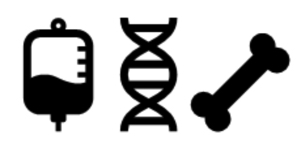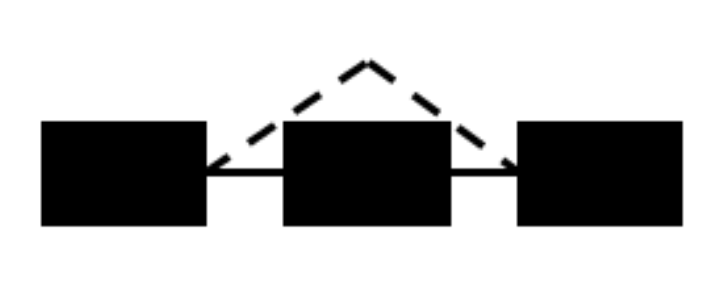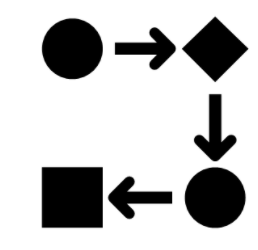Expression Analysis

The EASY app is a Shiny web app, offering a one-stop framework for RNA-seq analysis, including data exploration, differential expression, and gene set enrichment analysis. Users can perform hierarchical clustering using various distance metrics and variable gene ranking strategies, visualize gene expression through boxplots or scatter plots, and conduct differential expression analysis using LIMMA, with results displayed as volcano and MA plots. Pathway and gene set enrichment analyses (GSEA) are supported to identify enriched gene signatures, while single-sample GSEA (ssGSEA) calculates enrichment scores per sample, which can be downloaded or visualized as boxplots.
Live app on Shiny IO: https://shawlab-moffitt.shinyapps.io/drppm_easy_url_app/
GitHub: https://github.com/shawlab-moffitt/DRPPM-EASY-ExprAnalysisShinY
The Companion EASY-Integration tool offers an interactive platform for users to upload normalized RNA expression data, proteomic quantification, or ssGSEA scores, enabling the analysis of potential relationships among these features. Users can compare fold changes between datasets) and analyze differentially expressed genes using reciprocal GSEA or ssGSEA. Users can visualize these relationships through a 1:1 scatter plot or a 1:n ranking of Spearman correlation rho values. Additionally, the app facilitates simultaneous differential expression analysis and integration of two expression matrices, such as RNA and protein expression data. The overlap between differentially expressed genes is illustrated with a Venn diagram and can be further analyzed against existing gene set databases using Fisher’s exact test, Cohen’s kappa score, and the Jaccard index.
CCLE Integration Example: http://shawlab.science/shiny/DRPPM_EASY_CCLE_Integration/
Reference
- Obermayer A, Dong L, Hu Q, Golden M, Noble JD, Rodriguez P, Robinson TJ, Teng M, Tan AC, Shaw TI*. DRPPM-EASY: A Web-Based Framework for Integrative Analysis of Multi-Omics Cancer Datasets. Biology (Basel). 2022 Feb 8;11(2):260. doi: 10.3390/biology11020260. PMID: 35205126 PMCID: PMC8869715
Example Publications
- Comprehensive genomic analysis reveals molecular heterogeneity in pediatric ALK-positive anaplastic large cell lymphoma. Leukemia. 2024 Nov 26;. doi: 10.1038/s41375-024-02468-4. [Epub ahead of print] PubMed PMID: 39592809.
PATH-SURVEYOR

PATH-SURVEYOR interactive mode enables real-time analysis of immune signatures and pathway scores in relation to clinical outcomes (Fig. 1A). It supports patient partitioning by pathway scores, immune cell estimates, or gene expression, followed by univariate and multivariate Cox-regression analyses. Utilizing R packages like survival, survminer, GSVA, and immunedeconv, the app calculates pathway scores using ssGSEA (default) or other methods. Patients are categorized into high or low pathway activity groups based on user-defined thresholds. Multivariate analyses incorporate covariates from user-provided metadata, assessing pathway-survival associations and interactions while ensuring assumptions like linearity and proportional hazards are met
Live Shiny IO link: https://shawlab-moffitt.shinyapps.io/path_surveyor/
In addition to the interactive mode. The R package also provide the following components:
- Interactive (UI) Mode: Enables point-and-click pathway survival analysis, dichotomizing patient populations by gene expression or pathway activity, and analyzing survival using Kaplan–Meier and Cox's proportional hazard methods. It supports immune deconvolution and univariate/multivariate analyses.
- Pipeline (Advanced) Mode: Conducts comprehensive survival analysis of pathway databases and gene features, with covariate inclusion and P-value correction using Benjamini-Hochberg.
- Pathway Connectivity: Assesses pathway similarity and groups pathways predictive of clinical outcomes.
- Hazard Ratio Ranked GSEA: Performs GSEA based on gene-level hazard ratio rankings from the Pipeline Mode.
This tool automates package installation during runtime and provides robust survival analysis functionalities.
Gitub link: https://github.com/shawlab-moffitt/PATH-SURVEYOR-Suite
Reference
- Comprehensive genomic analysis reveals molecular heterogeneity in pediatric ALK-positive anaplastic large cell lymphoma. Leukemia. 2024 Nov 26;. doi: 10.1038/s41375-024-02468-4. [Epub ahead of print] PubMed PMID: 39592809.
- Mandula JK, Chang S, Mohamed E, Jimenez R, Sierra-Mondragon RA, Chang DC, Obermayer AN, Moran-Segura CM, Das S, Vazquez-Martinez JA, Prieto K, Chen A, Smalley KSM, Czerniecki B, Forsyth P, Koya RC, Ruffell B, Cubillos-Ruiz JR, Munn DH, Shaw TI, Conejo-Garcia JR, Rodriguez PC. Ablation of the endoplasmic reticulum stress kinase PERK induces paraptosis and type I interferon to promote anti-tumor T cell responses. Cancer Cell. 2022 Oct 10;40(10):1145-1160.e9. doi: 10.1016/j.ccell.2022.08.016. Epub 2022 Sep 22. PMID: 36150390; PMCID: PMC9561067.
BATCHFLEX: Batch Correction
BatchFLEX is a user-friendly Shiny app for addressing batch effects in data analysis. It can be accessed via a web server, locally in R, or through a Docker container. The app guides users through four key steps:
- Data Input: Upload a data matrix and a metafile with sample metadata.
- Batch Effect Assessment: Detect and quantify batch effects using visual and statistical tools.
- Batch Effect Removal: Apply advanced correction methods tailored to different data types.
- Comparison and Evaluation: Compare correction methods side-by-side to select the best approach.
Users can download the corrected data and summary statistics, with tools for downstream analyses like pathway enrichment and immune deconvolution, ensuring robust and reproducible results.
URLs:
Live app on Shiny IO: https://shawlab-moffitt.shinyapps.io/batch_flex/
GitHub link: https://github.com/shawlab-moffitt/BATCHFLEX
Reference
ADIOS Cancer

ADIOS: A Directory of Immunological Studies
A resource or system for organizing and cataloging information related to immunology research. The purpose is to 1) develop a centralized repository for immunological research studies. 2) Facilitates data sharing, collaboration, and discovery in the field of immunology. 3) Organize metadata, experimental data, or references to published studies.
1. Pediatric CSE Miner
Immunotherapy with T-cells expressing chimeric antigen receptors (CARs) holds the promise to improve outcomes for children with solid and brain tumors. However, at present, there is a limited array of targetable antigens. We posit here that targets generated by alternative splicing events in cancer cells present an untapped class of CAR targets since many of these are tumor-specific and overexpressed in malignant cells. Thus, we developed Cancer-Specific Exon Miner (CSE-Miner), a pipeline for mining exon-based CAR-T targets
https://cseminer.stjude.org/
2. Cell Type annotation of Immune Cells
https://github.com/shawlab-moffitt/BERLIN
Splicing Analysis

We have developed many algorithms to perform alternative splicing analysis. These analysis include 1) annotate novel exons and alternative start sites. 2) exon quantification. 3) quantifying splicing deficiency. In the future we plan to incorporate spliceQTL analysis.
URLs
- https://github.com/shawlab-moffitt/Splice-Junction-Filter-Workflow
- https://github.com/shawlab-moffitt/CSIdb
Example Publications
- Shaw TI, Wagner J, Tian L, Wickman E, Poudel S, Wang J, Paul R, Koo SC, Lu M, Sheppard H, Fan Y, O'Neill FH, Lau CC, Zhou X, Zhang J, Gottschalk S. Discovery of immunotherapy targets for pediatric solid and brain tumors by exon-level expression. Nat Commun. 2024 May 3;15(1):3732. doi: 10.1038/s41467-024-47649-y. PubMed PMID: 38702309; PubMed Central PMCID: PMC11068777.
- Gang Wu*, Liying Fan*, Michael N Edmondson, Timothy Shaw, Kristy Boggs, John Easton, Michael C Rusch, Thomas R Webb, Jinghui Zhang, Philip M Potter#. Inhibition of SF3B1 by molecules targeting the spliceosome results in massive aberrant exon skipping. RNA. 2018 May 29. pii: rna.065383.117. doi: 10.1261/rna.065383.117.
- Yuxin Li, Xusheng Wang, Zhiping Wu, Bing Bai, Ji-Hoon Cho, Timothy I. Shaw, Hong Wang, Suiping Zhou, Thomas Beach, Gang Wu, Jinghui Zhang, Junmin Peng#. JUMPg: An Integrative Proteogenomics Pipeline Identifying Unannotated Proteins in Human Brain and Cancer Cells. J Proteome Res. 2016 Jul 1;15(7):2309-20. doi: 10.1021/acs.jproteome.6b00344.
- Young Don Kwak, Timothy I. Shaw, Susanna M. Downing, Ambika Tewari, Aditi, Yang Li, Hongjian Jin, Sachin Katyal, Kamran Khodakhah, Helen R. Russell and Peter J. McKinnon. In revision.
- Ping-Chung Chen*, Xian Han*, Timothy I. Shaw, Yun Jiao, Brett J. W. Teubner, DonnieEddins, Mingming Niu, Bing Bai, Joseph Mertz, Yuxin Li, Ji-Hoon Cho, XushengWang, Zhiping Wu, Ariana Mancieri, Laurie R. Earls, Elizabeth Stewart, Peter Vogel, Thomas G. Beach, Michael A. Dyer, Richard J. Smeyne, Stanislav S. Zakharenko, Gang Yu, and Junmin Peng. Under submission.
Misc. Shiny Tools
Merge QC
Merging Matrices
Preranked Hazard Ratio GSEA
Takes in the Hazard Ratio table and performs GSEA analysis
Generate and Test Logistic Regression Models
- https://shawlab-moffitt.shinyapps.io/shinylogistic/
- https://shawlab-moffitt.shinyapps.io/shinyprediction/
IKAP: Kinase Activity

We have adapted a machine learning algorithm to calculate gene activity. https://github.com/gatechatl/KinaseActivity
Examples of applying the algorithm:
- Haiyan Tan*, Kai Yang*, Yuxin Li*, Timothy I. Shaw*, Yanyan Wang, Daniel Bastardo Blanco, Xusheng Wang, Ji-Hoon Cho, Hong Wang, Sherri Rankin, Cliff Guy, Junmin Peng#, Hongbo Chi#. Integrative Proteomics and Phosphoproteomics Profiling Reveals Dynamic Signaling Networks and Bioenergetics Pathways Underlying T Cell Activation. Immunity. 2017 Mar 21;46(3):488-503. doi: 10.1016/j.immuni.2017.02.010.
- Hong Wang, Alexander K. Diaz, Timothy I. Shaw,Yuxin Li, Mingming Niu, Ji-Hoon Cho, Barbara S. Paugh, Yang Zhang, Jeffrey Sifford, Bing Bai, Zhiping Wu, Haiyan Tan, Suiping Zhou, Laura D. Hover, Heather S. Tillman, Abbas Shirinifard, Suresh Thiagarajan, Andras Sablauer, Vishwajeeth Pagala, Anthony A. High, Xusheng Wang, Chunliang Li, Suzanne J. Baker, Junmin Peng. Deep multiomics profiling of brain tumors identifies signaling networks downstream of cancer driver genes. Nature Communications. 2019 Aug 16. 10 (1), 3718. doi.org/10.1038/s41467-019-11661-4
- Bing Bai, Xusheng Wang, Yuxin Li, Ping-Chung Chen, Kaiwen Yu, Kaushik Kumar Dey, Jay M. Yarbro, Xian Han, Brianna M. Lutz, Shuquan Rao, Yun Jiao, Jeffrey M. Sifford, Jonghee Han, Minghui Wang, Haiyan Tan, Timothy I. Shaw, Ji-Hoon Cho, Suiping Zhou, Hong Wang, Mingming Niu, Ariana Mancieri, Kaitlynn Messler, Xiaojun Sun, Zhiping Wu, Vishwajeeth Pagala, Anthony A. High, Wenjian Bi, Hui Zhang, Hongbo Chi, Vahram Haroutunian, Bin Zhang, Thomas G. Beach, Gang Yu and Junmin Peng. Deep Multilayer Brain Proteomics Identifies Molecular Networks in Alzheimer’s Disease Progression. Neuron. 2020 May 20;106(4):700. doi: 10.1016/j.neuron.2020.04.031
MASPECTOR: Metabolomics Library

We have developed a package for certain metabolomics associated analyses.
https://github.com/gatechatl/MaSpecTOR
Projects that utilized the pipeline include:
- Xusheng Wang, Ji-Hoon Cho, Suresh Poudel, Yuxin Li, Drew R Jones, Timothy I Shaw, Haiyan Tan, Boer Xie, Junmin Peng. JUMPm: A Tool for Large-Scale Identification of Metabolites in Untargeted Metabolomics. Metabolites. 2020 May 12;10(5):190. doi: 10.3390/metabo10050190.
- Boer Xie*, Yuanyuan Wang*, Drew R. Jones*, Kaushik Kumar Dey, Xusheng Wang, Yuxin Li, Ji-Hoon Cho, Timothy I Shaw, Haiyan Tan, and Junmin Peng#. Isotope Labeling-assisted Evaluation of Hydrophilic and Hydrophobic Liquid Chromatograph-Mass Spectrometry for Metabolomics Profiling. Anal Chem. 2018 Jun 8. doi: 10.1021/acs.analchem.8b01591
- Xusheng Wang*, Drew R Jones*, Timothy I Shaw, Ji-Hoon Cho, Yuanyuan Wang, Haiyan Tan, Boer Xie, Suiping Zhou, Yuxin Li, Junmin Peng#. Target-decoy Based False Discovery Rate Estimation for Large-scale Metabolite Identification. Journal of proteome research.2018 May 23. 10.1021/acs.jproteome.8b00019.
Data Wrangling

DRPPM is a library collection of scripts for analyzing DNA/RNA/Proteome/Post-translational Modifications. The program is capable of performing data wrangling of genomics, transcriptomics, and proteomics data. See https://github.com/gatechatl/DRPPM_Example_Input_Output for examples.
Projects that utilized the pipeline include:
- Shaw TI, Dong L, Tian L, Qian C, Liu Y, Ju B, High A, Kavdia K, Pagala VR, Shaner B, Pei D, Easton J, Janke LJ, Porter SN, Ma X, Cheng C, Pruett-Miller SM, Choi J, Yu J, Peng J, Gu W, Look AT, Downing JR, Zhang J. Integrative network analysis reveals USP7 haploinsufficiency inhibits E-protein activity in pediatric T-lineage acute lymphoblastic leukemia (T-ALL). Sci Rep. 2021 Mar 4;11(1):5154. doi: 10.1038/s41598-021-84647-2. PMID: 33664368; PMCID: PMC7933146.
- Joung Hyuck Joo*, Bo Wang*, Elisa Frankel, Liang Ge, Lu Xu, Rekha Iyengar, XiuJie Li-Harms, Christopher Wright, Timothy I. Shaw,Tullia Lindsten, Douglas R. Green, Junmin Peng, Linda M. Hendershot, Fusun Kilic, Ji Ying Sze, Anjon Audhya, Mondira Kundu#. The Noncanonical Role of ULK/ATG1 in ER-to-Golgi Trafficking Is Essential for Cellular Homeostasis. Mol Cell.2016 May 19;62(4):491-506. doi: 10.1016/j.molcel.2016.04.020.
- Kyung-Ha Lee*, Peipei Zhang*, Hong Joo Kim*, Mohona Sarkar, Diana Mitrea, Brian Freibaum, Jaclyn Cika, MauraCoughlin, James Messing, Amandine Molliex, Brian Maxwell, Nam Chul Kim, Jamshid Temirov,Jennifer Moore, Timothy I. Shaw, Bing Bai, Junmin Peng, Richard Kriwacki, Paul J.Taylor#. C9orf72 dipeptide repeats impair the assembly, dynamics and function of membrane-lessorganelles. Cell. 2016 Oct 20;167(3):774-788.e17. doi: 10.1016/j.cell.2016.10.002
